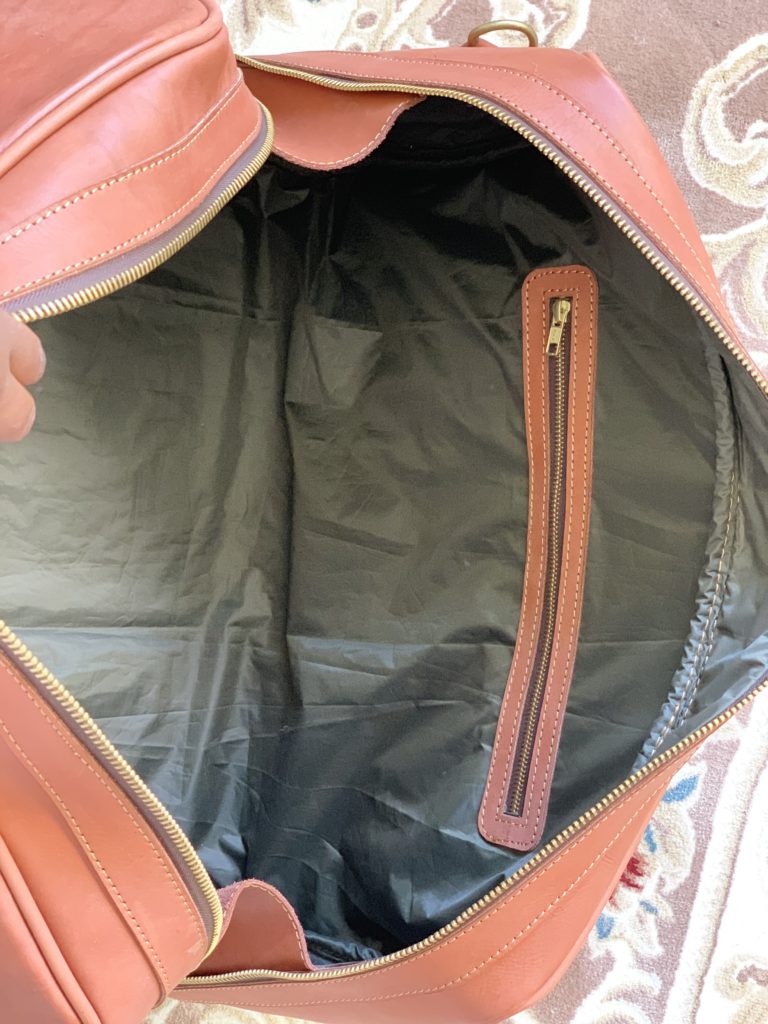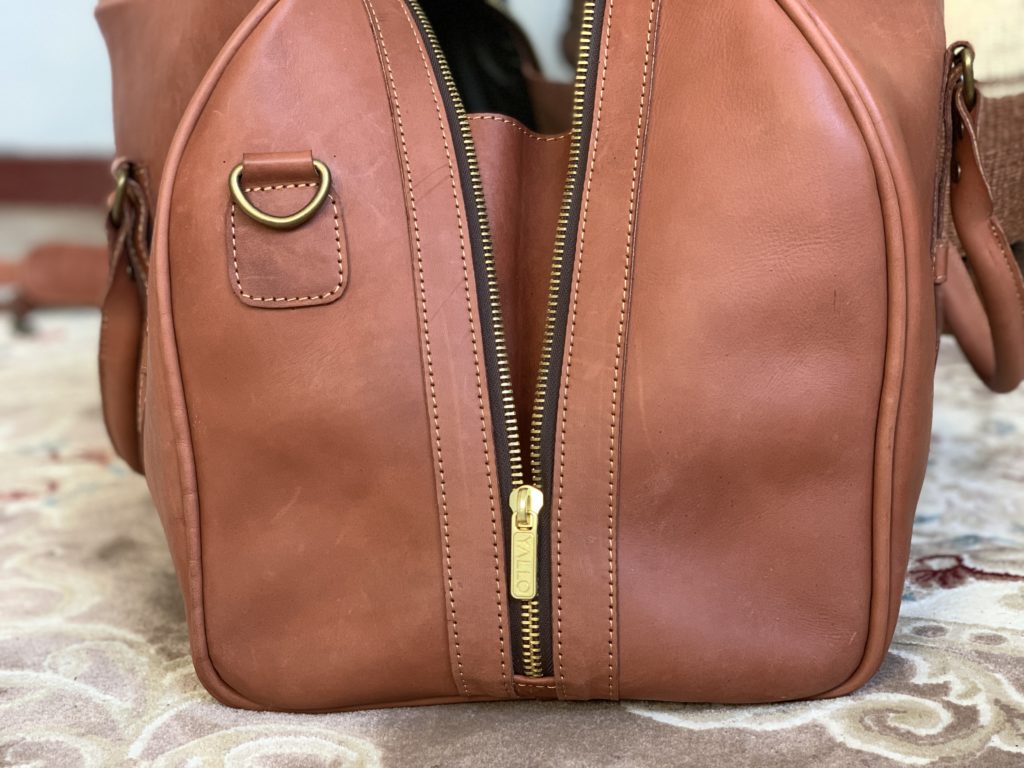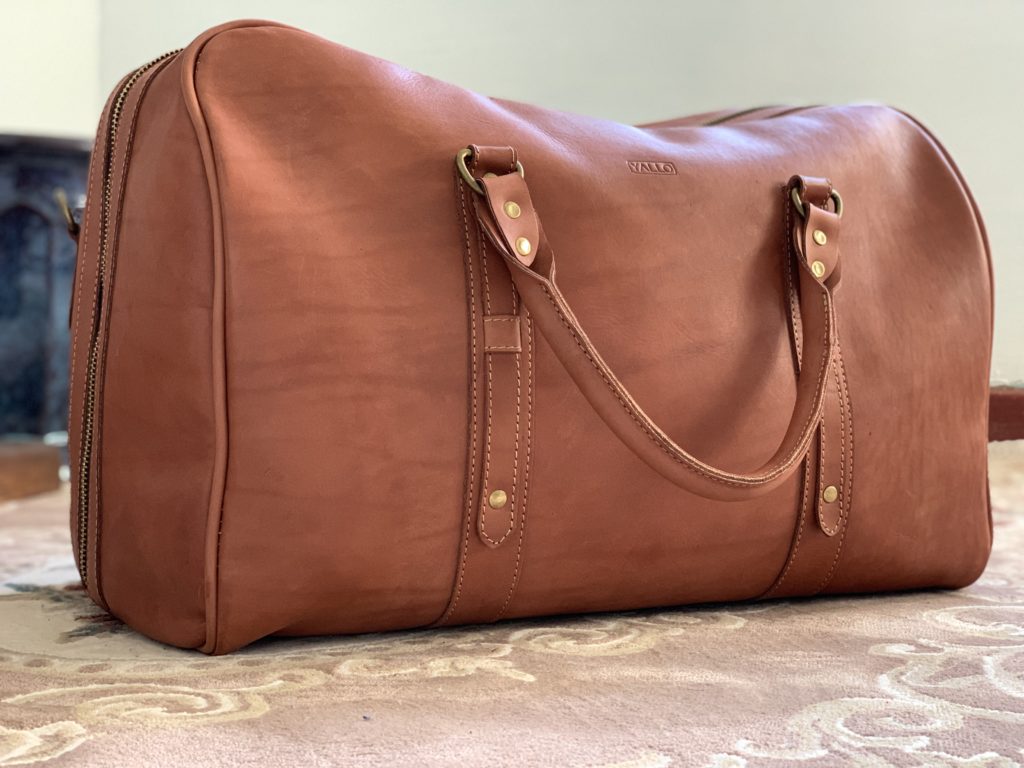Leather Care
What Do You Want Your Leather to Look Like?
The first task in deciding how to treat and care for your leather is simply asking what you want it to look like, and the role it plays in your life. A set of key organisers or the Mali wallet doesn’t need as much attention as a executive Rubani bag or a Ngii bag. A laptop bag will likely be naturally more beaten up than an organiser you carry around town.
It also comes down to taste. Some people want a clean, polished look for their bag, while others are okay with scratches, blemishes, and natural wear and tear.
So think about what you want your leather to look like, and next, we’ll go through some various treatment options.
The Differences Between Various Leather Treatments
If you’re new to leather, you may have thought that giving your bags and shoes a good polish every now and then was all that leather needed to stand the test of time. When perusing the leather care section of a supermarket, all the creams, polishes, waxes, and conditioners one envisions all these blended together into a single product. They’re not, in fact, totally interchangeable though. Let’s take a look at what these different treatments do to leather. Keep in mind there aren’t general pros and cons here; as stated above, it comes down to what you want, and what the function of the leather item is.
Polish. Polish is largely actually for aesthetics. On its own, it’s mostly about the actual shine of the product (usually shoes and bags) rather than protecting it from the elements. Having said that, many polishes have a moisturizing element, so you really have to look at the product description and user reviews to know what you’re getting and what it does.
Since cleaning is part of a good polishing routine, it’s certainly not a bad thing to do. Frequency of polishing simply depends on your own preferences for how you want your leather goods to look, but most casual items won’t need it.
Conditioner/Cream. Leather conditioner or cream moisturizes the material so that it doesn’t dry out and crack. This won’t make your bags “shine,” but it will protect them. Note that in most cases conditioners don’t waterproof your leather (though some do include a water-repelling component). Leather conditioners are lotion-like, and are to be gently rubbed into the leather. The hide will soak up the conditioner, just like your skin would soak up a moisturizer.
How often you use conditioner, as with the other treatments, really depends on what you want. Our take is you condition every 3-6 months, this doesn’t let bags completely dry out before re-applying. That keeps the leather looking subtle and soft, and prevents it from accruing scuffs, scratches, etc.
Lanolin
Lanolin is a natural waxy secretion from sheep. Just as human skin secretes various oils, sheep produce lanolin. It’s found in all kinds of human-use products from moisturizers, cosmetics, and baby wipes to — you guessed it — leather care products.
It’s nearly a 50-50 split of leather companies and style folks who advocate for or against the use of leather care products that contain lanolin. While a fine moisturizing product, it will soften the leather to a greater degree than other products. For jackets especially, and sometimes bags and shoes, this might be exactly what you want. A soft supple leather feels really nice.
So, always know to look for lanolin as an ingredient in leather care products, and use that knowledge to get exactly what you want out of your material.
Damp Cloth.
Using a damp cloth is the old reliable when it comes to leather care. Since leather is so very naturally durable anyway, giving it a wipe down (without soap — its chemicals can ruin the leather over time) once a week to get rid of the dirt and dust (the most nefarious culprits to premature wear and tear) constitutes a minimally sufficient care routine. If you use nothing else, this is the way to go.
Wire/Suede Brush.
In the case of suede (a form of leather that is simply the underside of an animal’s hide), don’t use any of the above products. All you’re going to do is use a small wire or suede-specific brush to wipe away dirt and grime. Avoid water with suede products as much as possible.
The verdict?
These treatments get really tricky because they can go by many different names, and they’re often combined — you find a lot of “shoe cream polish” or “waterproofing conditioner” in supermarkets and online.
How do you navigate this? You largely have to rely on your own research of a particular product. Many brands that make leather goods have care guides (interestingly, hardly any mention waterproofing). Even then, however, you need to look over ingredients lists and read up in forums or reviews of how people are actually taking care of these leather items. It’s no surprise that some companies are simply peddling their own conditioners or polishes, which may or may not be any better than other, often cheaper, brands.
Ultimately, you just need to test the various treatments to see what they do to your leather — how it looks, how it wears, how it handles the elements, etc. Leather is indeed hardy, so if you’re following the principles below, don’t worry too much about messing up your shoes or bag with the wrong product.
Leather Care Principles, No Matter the Form
Leather needs to breathe.
Just like skin, leather needs some ventilation to prevent mildew and rot. Air can naturally pass through leather, leaving moisture to evaporate naturally. That can’t happen when your leather is all sealed up, though. So don’t ever store or transport it in a plastic grocery bag (whoops — guilty of that one!). Either use the storage/travel bag the item came with, or some type of breathable fabric — pillowcases are great for shoes, bags, and/or other accessories.
Keep leather away from direct sunlight/heat.
If a leather item gets waterlogged, it can be tempting to throw it in front of a heater or to use a hair dryer to speed the process. Don’t do that, ever. Just like skin and other fabrics, when leather gets wet and then heated right away, it can shrink and dry out too quickly. Rather, let it dry naturally, even if it takes a couple days.
Also, just generally keep leather out of direct sunlight when storing. The leather fades naturally over time, but sunlight speeds up that process. Drying and cracking can also ensue. Darker places with some humidity are preferred, although again, ensure air flow so that mildew can’t form.
Test first.
When applying any polish or conditioner, always test a small area first. Any item is likely to change the color of the leather, even if only slightly. Before applying a treatment to an entire shoe, test it on a small portion, let it dry for 24 hours, and see what happens. It may seem tedious, but it can keep your shoe from looking different than what you want. If a certain brand/color goes well the first time, then feel free to use repeatedly without testing again.
Go with natural/neutral colors.
Many polishes and creams will come in either black, brown, or neutral. The added dyes are thought to liven up any faded color in a leather product. While black is a pretty safe choice for black products, there are just too many shades of brown to match things up perfectly. To avoid unnecessarily changing the hue of your leather, stick with neutrals (usually either white or gray in the can/bottle).
Regularly clean with a damp cloth.
As mentioned above, the most foolproof way to keep any leather product from prematurely aging, even if you do nothing else, is to give it a regular wipe-down with a damp cloth. Your jackets, shoes, bags — they all quickly accumulate dirt, dust, and all manner of other abrasive particles that lead to premature wear and tear. Preserve your leather by wiping them down weekly, or even after a single hard use in a winter storm, with a wet cloth or even paper towel.
Generally speaking, leather doesn’t need waterproofing.
Most leather goods sold these days are treated to some degree or another with some sort of waterproofing agent. In most environments and conditions, your leather will hold up just fine to rain, snow, etc. If you’re someone who is hiking with leather boots, or you’re regularly out in deep snow or heavy rain with them, then you should waterproof — and even then, it’s more for the contents of the leather item (your feet, your laptop, your body) than the material itself. If you’re unsure about waterproofing, ask the manufacturer. They’ll tell you whatever treatment it already has, and if the product needs additional care based on your activities and uses.
Things to Consider for Specific Leather Goods
Bags/wallets.
Your primary concern here is to avoid over-filling these items. Once misshapen, leather isn’t going to spring back to its original form (hence shoe trees in shoes). Bags generally need less treatment than shoes just because they aren’t subject to the same beating as footwear. Still wipe them down regularly, though, and condition every 6-12 months.
To sum up, ensure that you have a good routine for caring for your leather goods. In many instances, it will look something like these 3 easy steps:
- Wipe down leather with a damp cloth 1-2 times per week depending on use and accumulated dirt and grime.
- Condition leather every 3-6 months, sometimes more depending on the environment and season.
- Waterproof once a year, if desired, and if your lifestyle/environment calls for it.
The best way to keep your bag in top condition is protection.That being said, regular cleaning is also recommended even if it is a swift wipe down, for that clean look some regular wipe is a must. Your leather bag will benefit from the use of leather cleaners available in local supermarkets. What you want is a mild cleaner which will not affect the original look, properties or finish of the leather. We recommend you test on an inconspicuous area of your bag first.
Dealing with ink marks & stubborn stains
The key to removing ink marks is to treat them almost instantly or within a short time of it happening. Its advisable you have a tiny bottle (eye drop size) in your bag to take care of such a mess.
However, if the stains have been around for some time they are likely to be stubborn to remove therefore seek professional help….thats us.The product has to be purchased from us for the cleaning service.



